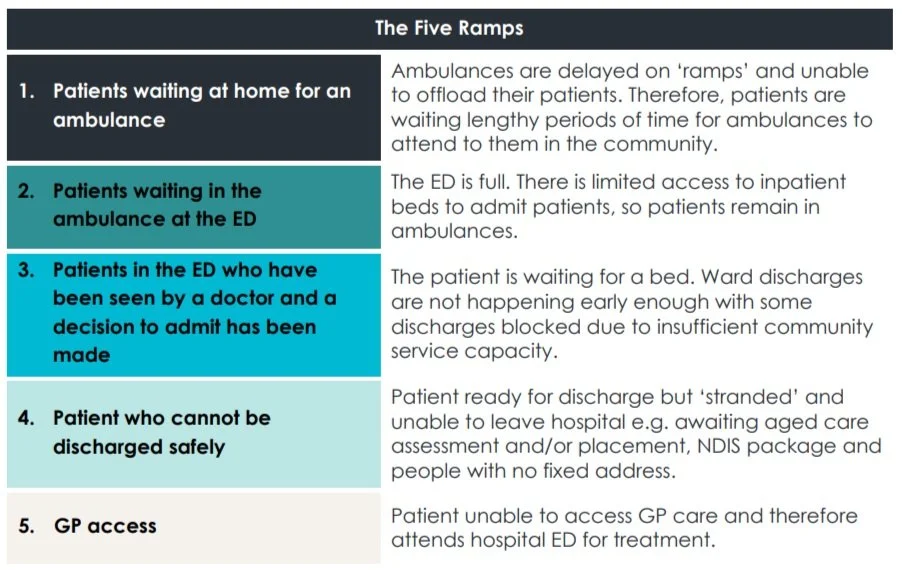Addressing Ambulance Ramping in Australia Part 1
A Comprehensive Overview of Issues and Solutions
In this article we take a closer look at the various factors contributing to ramping and some of the proposed strategies to sustainably mitigate ambulance ramping in Australia.
Ambulance ramping, the delay experienced by ambulance crews in off-loading patients at hospital emergency departments, poses a significant challenge to healthcare systems worldwide. In Australia, this issue has garnered attention due to its impact on patient care, ambulance availability, and overall emergency response effectiveness. Ambulance ramping in Australia has been a persistent problem, with ambulance crews frequently experiencing delays in transferring patients to hospital care. This leads to increased wait times for patients requiring emergency treatment, as well as reduced ambulance availability for new emergencies. Factors contributing to ramping include overcrowded emergency departments, limited hospital bed capacity, and systemic inefficiencies in patient flow management both within and outside of the hospital environments.
Full article Download here
The Five ‘Ramps’ of Ambulance Ramping
In considering the factors that contribute to the ramping phenomenon, it becomes clear that there is more than one queue, or ramp. There are several queues, or blockages that contribute to the inability of emergency departments to transfer patients to wards and create capacity to enable ambulances to transfer patients to the emergency department. Each of these ‘ramps’ should be considered, analysed and solutions developed to address the whole of system issues that contribute to the issue.

